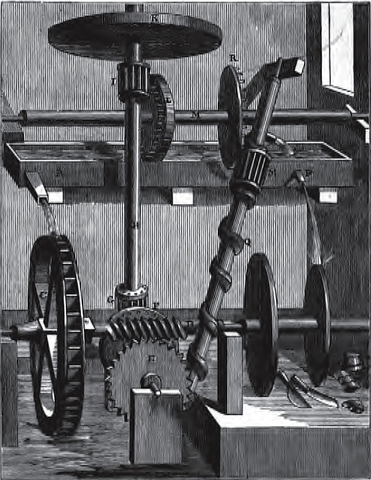
Could a perpetual motion machine be possible? No, because any perpetual motion machine would break the laws of thermodynamics. The definition of a machine is a device used to perform a task. Any perpetual motion machine has to be able to perform work to be a machine.
There are a lot of people that say they have made a perpetual motion machine and if you look on YouTube, you can find a lot of videos of them, but they are not true. The problem with any kind of perpetual motion machine is that it must work indefinitely without adding any extra energy. And this is the problem. The only way a perpetual motion machine can move is to use energy, and if no more energy is added, it will stop.
A perpetual motion machine would violate the first two laws of thermodynamics. The first law is that energy can be converted from one form to another, but it can never be created or destroyed. The amount of energy in the universe is finite, and that amount cannot be changed. The second law is the law of entropy. All things in a system head towards a state of disorder.
So, how would a perpetual motion machine break these laws? They break them because they are a closed system, and they have to produce enough energy to do work. Let’s think of an example of a perpetual motion machine. Let’s imagine a water wheel that is powered by water falling from above it. For the machine to be perpetual, the water has to be pumped back up above the waterwheel so it can fall again, powering the wheel. It takes energy to pump the water back up, and the idea behind the machine is that the energy to pump the water back up comes from the motion of the waterwheel. The first problem is that no machine is 100% efficient,t and it will always require more energy to pump the water back up than the wheel can produce. Energy is lost to friction, air resistance, and heat. Without a source of external energy, the waterwheel will stop. The second problem is that for this to be a machine, the waterwheel has to be able to perform work, perhaps grind grain. This will add more friction, cost more energy, and the machine will stop. The only way this machine would be able to work would be if it was creating energy, which violates the first law of thermodynamics. The energy in the system has to be 100% and the machine would need more energy than was being put in.
A perpetual motion machine would violate the second law of thermodynamics because the system would have to stay in the same form forever and that is impossible. Every single material decays over time. There is nothing that is forever, even on the scale of the universe. Even stars are not perpetual because they lose their energy into space. Stars undergo entropy, just like everything else.
There are some things that can technically move forever. A superfluid will spin forever if you stir it. However, you need energy to keep the superfluid as close to absolute zero as possible. A bicycle wheel spun in space would also spin forever, as long as it didn’t have an axle or something to produce friction. It would also have to avoid being hit by all the particles that float in space. However, both of these things would decay and undergo entropy. The bicycle wheel spinning in space would break down over time. And the second problem with both of these things is that they cannot do any work. You cannot use either of them to do anything because as soon as you do, you introduce friction, and you remove energy from their system. Both of them will stop the second you try to use them to do anything.
There have been many people throughout the ages who have used perpetual motion machines to get money from people. That seems to be the only purpose for them. To get money from people or to get views on YouTube. If you look closely at any of the machines, there will be an energy source hidden somewhere. There has to be because any perpetual motion machine would violate the laws of the universe. And this is what I learned today.
Try these next:
Sources
https://www.livescience.com/55944-perpetual-motion-machines.html
https://en.wikipedia.org/wiki/Charles_Redheffer
https://en.wikipedia.org/wiki/Perpetual_motion
https://en.wikipedia.org/wiki/Laws_of_thermodynamics
https://www.magneticshields.co.uk/technical-perpetual-motion-machines
Image By George A. Bockler – en:Image:WaterScrewPerpetualMotion.png, Public Domain, https://commons.wikimedia.org/w/index.php?curid=2854454
